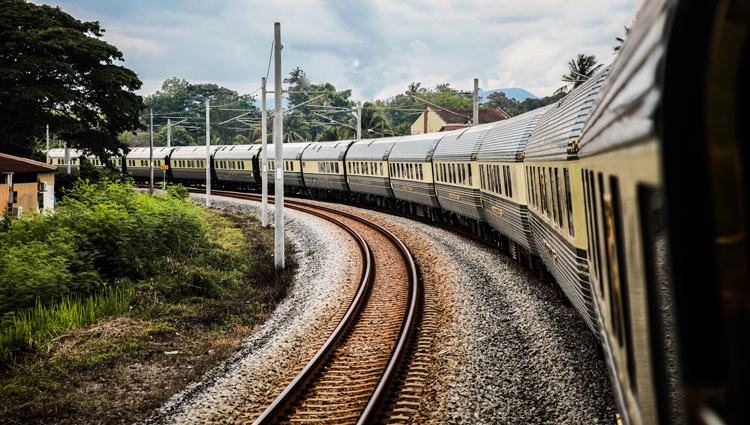The electronics challenge with Network Rail’s digital transformation
Digital technology and innovative electronic devices are transforming our railway network. And it’s about time. Here John Johnston, NPI Director delves into the signaling future, and in particular the challenges when it comes to electronics at the heart of Network Rail’s digital transformation.
In the words of Steve Yianni, from Transport Systems Catapult: “We now find ourselves at the gateway of a revolution in transport technology, the likes of which has not been seen since the invention of the combustion engine. These technological advances will create a new way of planning and managing our transport.”
Britain’s railway network is the most congested anywhere in Europe and it just gets busier and busier. In the last 20 years the number of people travelling by train has doubled, and the rail network has hit capacity.
But rail passenger numbers are forecast to increase by another 40% by 2040 – representing more than a billion extra journeys on an already crowded network.
Network Rail has admitted that simply supplementing the existing network is neither cost-effective, practical, nor likely to provide a solution. It has stated that ‘we will never be able to build enough tracks and platforms to meet this capacity challenge in the traditional way. To grow future capacity we are investing in digital signalling as part of our Digital Railway programme’.
Let’s take a look at how this will work, what it replaces and how innovative electronic manufacturing processes are rising to the challenge of enabling this transformation.
Digital: the new diesel
“Not since the railway transformed from steam to diesel in the 1960s has a technological breakthrough held such promise to vastly improve our railway for the benefit of the millions of people and businesses who rely on it every day. This commitment to adopt and roll-out new digital technology, for both trains and track, will deliver faster, more frequent services for passengers and businesses alike, giving our economy a massive boost.”Mark Carne, Network Rail Chief Executive.
Digital is very much a proven technology solution for rail. Its adoption has already been tested as a cost-effective way of boosting capacity on the existing London Underground network and is now in place on the London Bridge Thameslink route and on Crossrail.
By using IoT devices and connectivity to manage the network with greater precision and efficiency, allowing more trains to run on existing tracks and placing safety and reliability at the centre of the rail service. It also reduces overcrowding, cuts delays and drives down operational costs.
In essence, the ambitious Digital Railway programme will deploy digital in-cab signalling, connected driver advisory systems, sensors to track trains and automated train control technology.
By using connected technology to replace train command, control and signalling systems that were designed in a pre-digital age, significant improvements can be realised.
The stop-start traffic light and semaphore signalling system mainly used at present is a Victorian legacy. And it’s about to receive a long overdue radical digital overhaul.
Innovative electronic manufacturing
While digital may be the disruptive enabler here, electronic devices and sensors lie at the heart of this project.
- From the driver control screens in cabs, to the passenger information systems in carriages
- From the signalling stations trackside, to the sensors in tracks
- From the automated train, to the networks handling the data
There are some lessons we can learn from the existing technology.

Signalling system failure, for instance, is often caused by a component fault. A complete system is made up of many thousands of individual components and duplication is not always possible thanks to the increased risk of obsolescence due to the system’s age.
It is clear that electronic devices manufactured for the Digital Railway must be developed with a firm eye on the supply chain that is deployed to source its components.
Failures of signalling equipment are also frequently caused by the environment in which they must operate. These can include risks from flooding, lightning strikes, high impact jolts (if located as part of the interlocked system of points), external power supply failure and extreme heat.
Rigorous testing of all devices must account for the environments they will be used in and the forces they will be susceptible to.
But, on the whole, there isn’t much the traditional technology can teach us – the addition of new, innovative digital solutions and capabilities requires radically different designs.
Each of these devices – and each component within them – must be able to operate in safety-critical situations. Again, supply chain considerations, power supply factors and the ability to design, build and rigorously test complex assemblies is critical to the Digital Railway project’s success.
Overcoming the electronics challenge at the heart of rail’s digital transformation
Rail companies and manufacturers need to work with partners who have a track record of delivering high-reliability and safety-critical electronic devices for the challenging environment the rail network operates in.
A partner that can offer design support, supply chain management, rigorous testing and are dedicated to robust manufacturing process governance is vital when tackling this type of digital transformation.
With several, highly relevant electronic rail products already manufactured for clients – including trackside signalling technology, control-room monitoring equipment, communication technology and safety devices. It’s time to meet the challenge and seize the opportunities that rail’s digital future will present to the industry.







